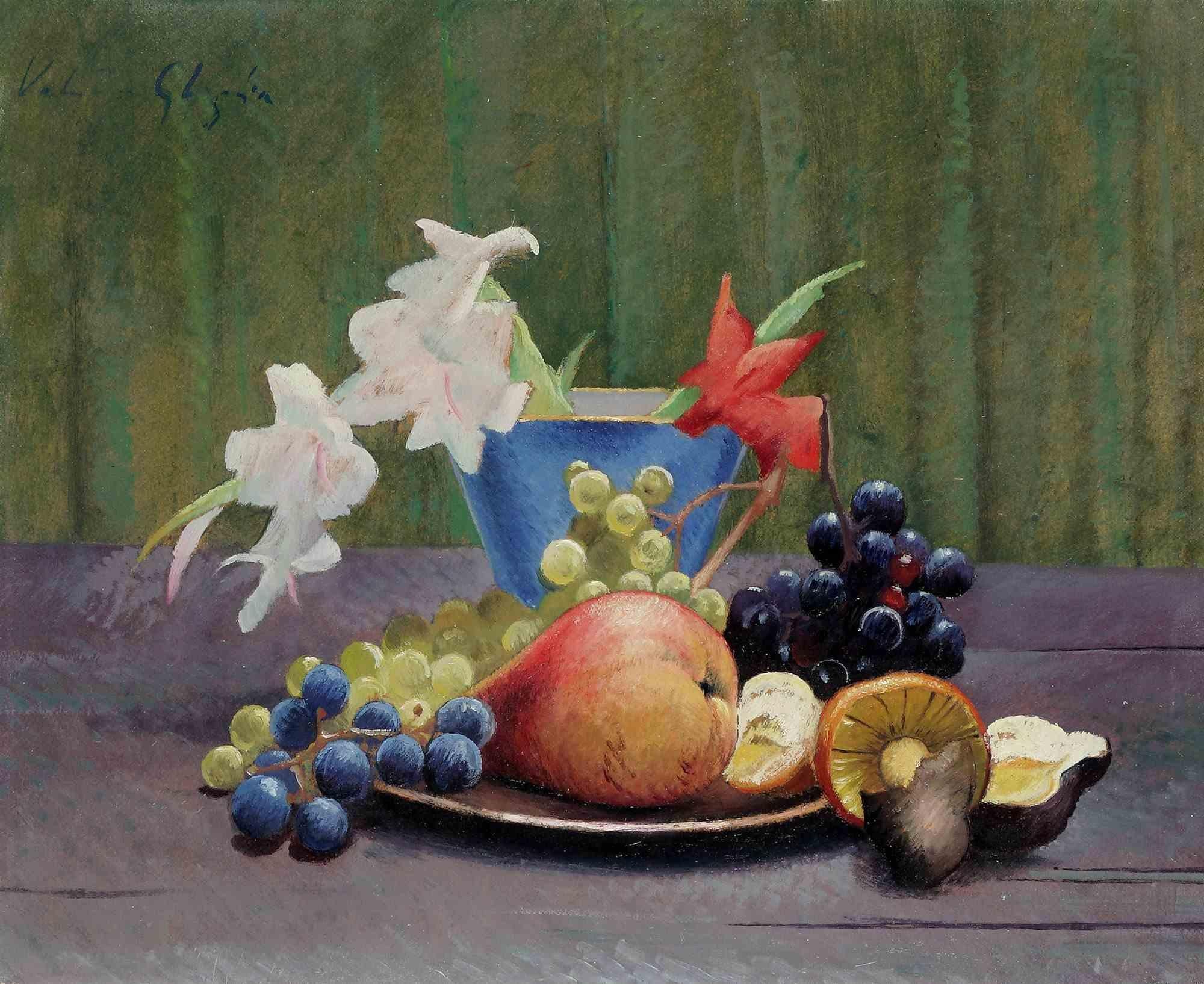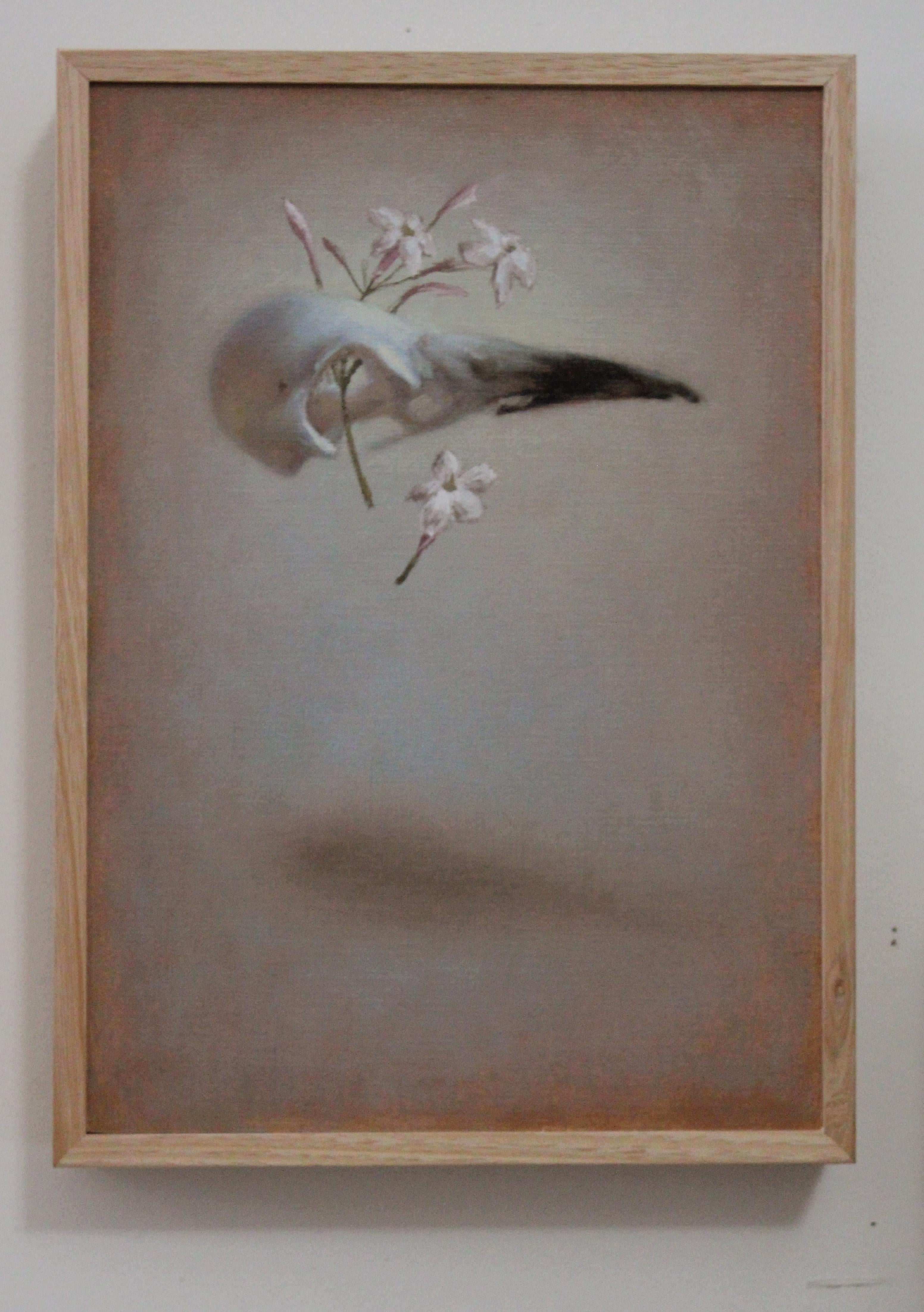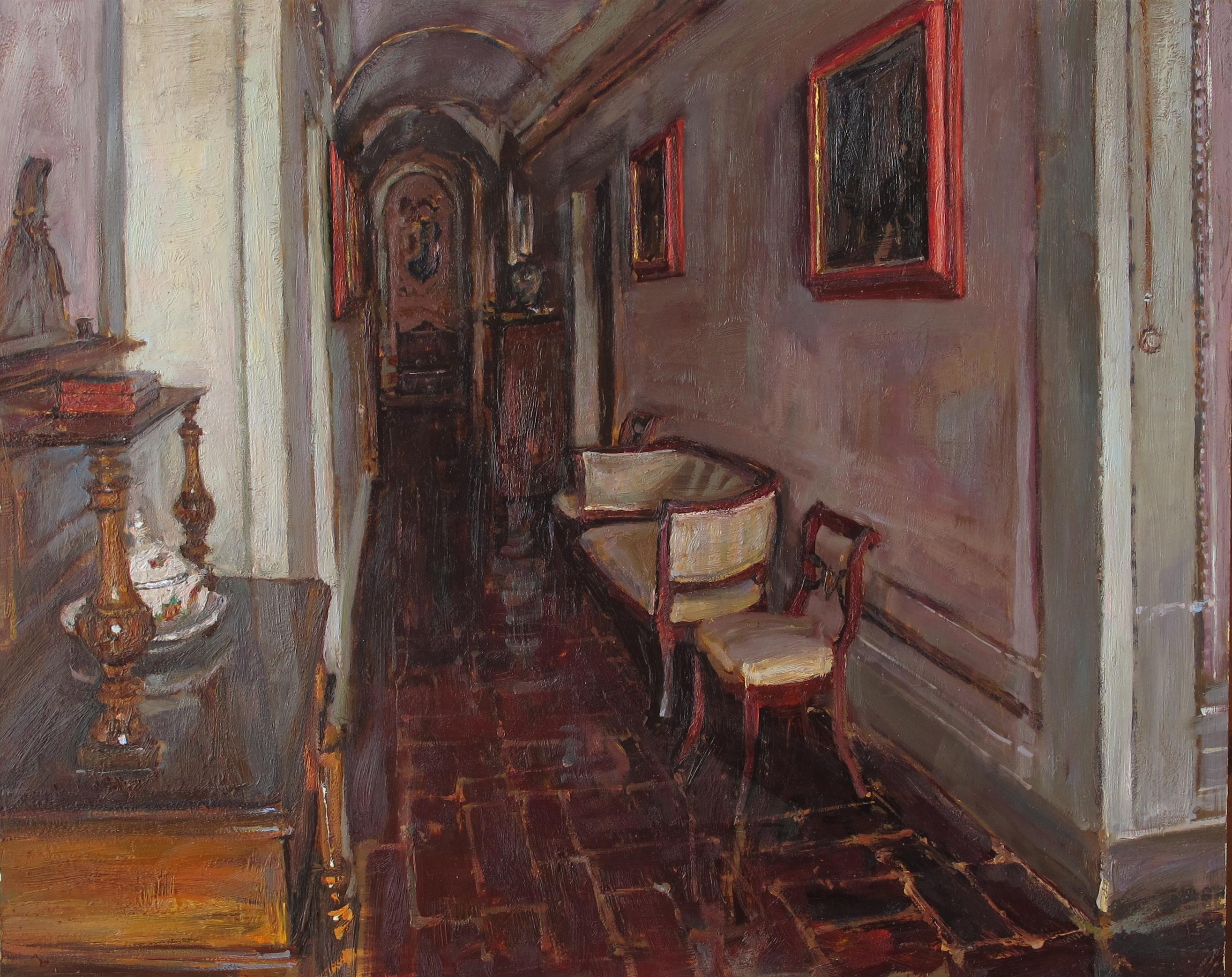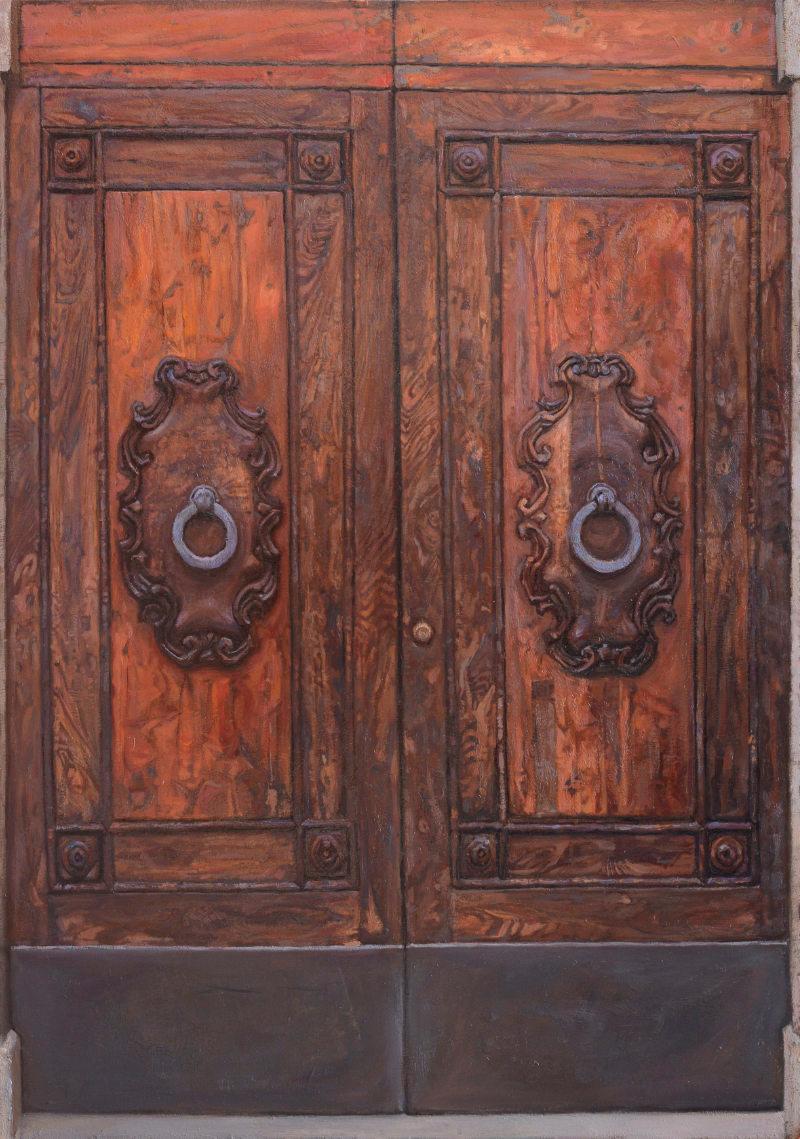Items Similar to Bunch of Roses, Oil on Paper
Want more images or videos?
Request additional images or videos from the seller
1 of 8
Gustave LinoBunch of Roses, Oil on Paper1950s
1950s
About the Item
Oil on paper mounted on cardboard by Gustave Lino (1893-1961), France, 1950s. Bunch of Roses. Measurements : with frame: 73.5x58.6 cm - 28.9x23.1 inches
without frame: 61x46 cm - 24x18.1 inches, format 12P. Signed "Lino" (see photo).
About Gustave Lino :
Gustave Lino was born in Mulhouse on October 27, 1893. Adolescent, he often visits the museum of the city and is interested in painting. In 1912, at only 19 years old, he went to Marseille and discovered the particular light of Provence. Without anyone knowing why, he embarks for Algiers. In 1914, the war broke out. Lino is of German nationality. It is for this reason that he is incarcerated in Corsica at the convent of Corbara. He learns painting alongside a fellow countryman. He paints many paintings and decorates the hotel Solferino d'Ajaccio and the castle of Malaspena-Massa in Belgodère.
At the end of the war, he returns to Algiers. He follows the courses of Georges Rochegrosse. Particularly talented, he exhibites in Paris in Salons and galleries, such as the Salon des Artistes French from 1926 and the Danton Gallery, rue La Boétie in 1927.
To perfect his training, he then undertakes a long stay in Spain where he studies chiaroscuro. Back in Algeria, he travels the north and the great south of Algeria (Laghouat, Touggourt, El Oued among others ...). He is very interested in Albert Marquet's painting, which particularly seduces him. This clarity while transparency, this harmony of lines and tones becomes his ideal of perfection. He specializes in still lifes, Algerian landscapes and seascapes.
He leaves Algiers for Bou-Saada. After the Second World War, Lino makes several trips. In Tunisia, where he is gone for a few days, he spends six months in Sidi-Bou-Saïd, crunching every corner of the city, seizing the habits of the inhabitants. He will also spend six months in the Balearic Islands and later in Mallorca. He returns to Corsica long after his internment and travels the island for several months. In 1954, he spends a few weeks in Venice and the works are the opportunity of an exhibition that is a real success.
Very close to the group called "Painters of Poetic Reality" (Maurice Brianchon, Christian Caillard, Jules Cavaillès, Raymond Legueult, Roger Limouse, Roland Oudot, André Planson and Kostia Terechkovitch.), close friend of Albert Marquet (Marcelle Marquet will say from him that "he succeeded Marquet better than Marquet himself"). Also appreciative, Albert Camus said of Gustave Lino (at the Salon of Algerian artists of 1934): "His Marines, if we feel the influence of Marquet, are nonetheless true successes, sensitive, fresh and of one coming ". All this in respect of this artistic movement which, as writes E. Cazenave: "to an Orientalism dreamed artists of Algeria oppose a lived orientalism". His palette is particularly colorful, often linear, with a predilection for blues, taking as a subject all the towns and villages visited.
But his creativity is not limited to landscapes, he is also an accomplished portraitist and his talent will gradually evolve from Expressionism to a more and more contemporary painting whose modernism is revealed at the end of his life. through his "Compositions". It is part of contemporary post-war Algerian painting with: Sauveur Galliero, Jean Simian, René-Jean Clot, Pierre Pruvost, Jack Chambrin, Jean-Pierre Blanche, Pierre Clement, etc.
He became an eminent member of the Algiers School and exhibited at the Galerie de l'Institut - rue de Seine in Paris in 1957, after which the City of Paris bought him a painting, Intérieur, which will be exhibited at the Palais du Luxembourg.
He died in 1961. He posthumously won the last Algerian Grand Prix Artistique in 1962.
- Creator:Gustave Lino
- Creation Year:1950s
- Dimensions:Height: 28.94 in (73.5 cm)Width: 23.08 in (58.6 cm)Depth: 1.38 in (3.5 cm)
- Medium:
- Movement & Style:
- Period:
- Condition:
- Gallery Location:Saint Amans des cots, FR
- Reference Number:1stDibs: LU1088214105392
About the Seller
5.0
Vetted Seller
These experienced sellers undergo a comprehensive evaluation by our team of in-house experts.
1stDibs seller since 2018
34 sales on 1stDibs
- ShippingRetrieving quote...Ships From: Saint Amans des cots, France
- Return PolicyA return for this item may be initiated within 2 days of delivery.
More From This SellerView All
- Charles PICART LE DOUX, Bouquet of Wild Flowers, 1934By Charles Picart le DouxLocated in Saint Amans des cots, FROil on canvas by Charles PICART LE DOUX (1881-1959), France, 1934. Bouquet of Wild Flowers. Artwork typical of the manner of Charles Picart Le Doux. However, the robust and contrasti...Category
1930s Art Deco Figurative Paintings
MaterialsCanvas, Oil
- Jean-René Chatelain, Carnation Vase, Oil on CanvasLocated in Saint Amans des cots, FROil on canvas dating from 1946 by Jean-René Chatelain. Beautiful canvas of a neo-realism soothed. Measurements : with frame: 81x72x7.5 cm - 31.9x28.3x3 inches, without frame: 68x58 c...Category
1940s Post-Impressionist Figurative Paintings
MaterialsCanvas, Oil
- Pierre TROFIMOFF, Still Life with Basket, Oil on Canvas, 1992By Pierre TrofimoffLocated in Saint Amans des cots, FROil on canvas by Pierre TROFIMOFF (1925-1996), France, 1992. "STILL LIFE WITH BASKET". Another version of this still life, very close to this one and entitled "Still life with the blue wall", is found in the book "Trofimoff" by Jacqueline de Grandmaison, Editions Vision sur les Arts, Béziers, 1978, page 29, full-page color illustration. This last work will have been used as cover page for the invitation 4 pages-card to the exhibition which took place from October 18 to November 10, 1978 at La Cadrerie - Galerie Edouard Chaix-Bryan, 23 rue du Docteur Fiolle in Marseille. With frame: 82x71 cm - 32.3x28 inches ; without frame: 65x54cm - 25.6x21.3 inches. 5F format. Signed "Trofimoff" and dated "92". Titled on the back (see photos). Pierre Trofimoff was born October 20, 1925 in Marseille in a very traditional bourgeois family, distant Polish origin. Very early, he declares a desire to become a painter. At 10, he entered the Melizan Institute in Marseille. His teenage vacation, he spent them in the house of his grandmother in Revest-les-Eaux near Toulon. In the countryside, he observes many artists drawing or painting on the motif, like the painter Eugène Baboulène and the sculptor Dionisi. Later, he will meet on the same place the engraver Decaris. Little encouraged by his family in his vocation, he was denied entry to the Ecole des Beaux-Arts in Marseille. However, he will go there as a free listener every Thursday It's the war. He is an inveterate museum-goer and deprives himself of cinema to buy books of Art. He likes Puget, Loubon, Delacroix, Courbet. Later Van Gogh, Soutine, Modigliani, Leprin, Pascin, Marquet, Dufu, Braque and Verdilhan by which he will be influenced. At the end of the war, Trofimoff works as a leather and hides broker. But simultaneously, he works his painting. He paints a lot in the company of Pierre Gontard and often goes to Meiffren's studio, cours Estienne d'Orves. There, the poet Boissin, the painters Jammes, Helene Martin and the actors of the troupe of the Galion d'Or meet. Trofimoff also meets Louis Pons, Raffaelli, Pierre Ambrogiani and Antoine Ferrari...Category
1990s French School Still-life Paintings
MaterialsCanvas, Oil
- Nandor Vagh Weinmann, Oil on cardboard, Naked Back, 1930sLocated in Saint Amans des cots, FROil on cardboard by Nandor VAGH WEINMANN (1897-1978), France, 1930s. Naked back. With frame: 64x56 cm - 25.2x22 inches ; without frame: 46x38cm - 18.1x15 inches. 8F format. Signed "Nandor V. Weinmann" lower left. In its Montparnasse frame. Very good condition. Born October 3, 1897 in Budapest, Nándor is the older brother of Elemer and Maurice Vagh-Weinmann. He came to Paris to present his work in 1931. He died on December 12, 1978 near Montereau (Seine-et-Marne) following an automobile accident. He is the most colorful of the three “expressionist” brothers. Painter of figures, landscapes, especially open mountains, and bouquets in bright colors. He is also a religious painter and then finds the tragic condition. Born in BUDAPEST on October 3, 1897, Nandor Vagh Weinmann belongs to a profoundly artistic people. Living in the heart of Central Europe where they came from Asia a millennium ago, the Hungarians have preserved a strong ethnic individuality whose mark is their very synthetic, non-Indo-European language. Resistant to secular invasions, they have kept the virtues of a very ancient humanity that have become rare in our modern world, especially since their way of life has remained essentially rural until today. In the arts they know how to express a generous, extreme sensibility and by the poetic verb, by the musical rhythms and also by a popular art of a richness, an exceptional harmony. Until the age of thirty-four, during the decisive years of childhood and youth, Nandor Vagh Weinmann was intimately imbued with popular life and the soul of Hungary. From the capital where his father was a jeweler and had a family of ten children, Nandor was the fifth, he knew first of all the suburbs, the populated districts, the rigors in winter of the cold and the snow. A very mobile existence made him acquainted with all of Hungary, from the Danube to Transylvania, its infinite plains and its wild mountains, its immense villages with ample low houses, and its towns which are still immense villages. The painter is passionate about rustic works, harvest scenes, beautiful folk costumes. Coming into direct contact with the peasants, he learned to know their soul. These contacts gave the artist a direct feeling for popular life and soul, as Millet once understood the peasants of Barbizon and Normandy whose existence he shared. What fascinated Nandor Vagh Weinmann above all were the festivals which enlivened the dreary life of the countryside, the circuses, the merry-go-rounds, the gypsies unleashing orgies of music, light and color. In the party, and especially the Hungarian party, the whole soul of a people, all its energy, its need for movement, for intensity, is expressed in its pure state and realizes the primary and essential form of what is called beauty. And as if melted at the party, there is the infinite steppe where herds of horses and oxen circulate where terrible storms sometimes roar where the seasons unfold their grandiose splendours. The young Nandor Vagh Weinmann nourishes his sensitivity to his inexhaustible shows, both eternal and always new, a sensitivity which very early declared itself that of a painter. Since the age of fourteen he painted, and since then he never stopped doing it. Two of his brothers Maurice, two years his junior, who had a remarkable career similar to that of Nandor and later Elemer who became Maurice's pupil, also devoted themselves to painting, despite family obstacles. And the three brothers united by a common passion worked together in Hungary and later in France. Painting was so much in the blood of the family, as in the past among the Veroneses, the Breughels, the Lenains, the Van Loos and so many other artistic dynasties, that three sons of the Vagh Weinmanns became painters in their turn. One of these, Emeric, son of Nandor, today occupies an important place in the contemporary school. Nandor, at fifteen, was a pupil of the Academy of Fine Arts in Budapest where he worked diligently, then at that of Vienna. He painted many portraits, but also landscapes, compositions and, by his relentless work, managed to live from his brush, although married very young and having to overcome many hardships. He therefore knew the hardships and miseries of life. These strongly impregnated his vision as an artist and explain the thrill of humanity that runs through all his work. A particularly moving experience was reserved for him at the age of twenty. In the hospitals of Budapest he had to paint extraordinary cases, operations, frightful wounds, the deformations to which our poor body is subjected by traumas and physiological decompositions. In these circumstances, it is not a question of gratuitous art, of formal research but of immediate, authentic expressions of our flesh and our being. We know that Breughel Velázquez and Goya had been haunted by the sight of cripples and of madmen Géricault by that of corpses. But life is ultimately stronger than anything, and it is life that Nandor Vagh Weinmann has passionately observed and translated through all the places where he has always painted on nature. Nothing stopped him. It happened to him to paint, for example in front of the mill of Linselles by a weather so cold, that nobody could stay outside, and that he did not leave the place before having finished his work. Because he works constantly on the ground, under the sky, in the silence he loves. His reputation is established. He exhibited at the national fair in Budapest, in the big cities of Hungary Szeged, Szombathely, Veszprém, Kaposvar. In 1931, like all artists in the world, he came to France. But unlike the others, he did not settle in Paris. Because Nandor Vagh Weinmann does not belong to this group of cosmopolitans that we call the School of Paris. He settled in Toulouse, where he remained for a long time with his brothers, and traveled throughout France, eager for new ties, exhibiting in the most diverse cities, in Bordeaux, Marseille, Lyon, Agen, Bayonne, Dax, Tarbes, Grenoble, Nice, Cannes, Strasbourg, Mulhouse, Colmar, Lille. He even crossed borders. He was in Saint Sebastian, in Geneva, and once in Egypt in 1927 where he painted King Fouad...Category
1930s Expressionist Figurative Paintings
MaterialsOil, Cardboard
- Luis Lopez, Oil on canvas "Beach Near Valencia", fishermenLocated in Saint Amans des cots, FROil on canvas by Luis LOPEZ, 1983, Spain. Beach near Valencia. Fishermen, fisherman. With frame: 106.7x80 cm - 42x31.5 inches ; without frame: 92x65 cm - 36.2x25.5 inches. P30 format...Category
1980s Realist Figurative Paintings
MaterialsCanvas, Oil
- Roger Halbique, Oil on Canvas, Still Life with Roses, 1950sLocated in Saint Amans des cots, FROil on canvas by Roger Charles Halbique (1900-1977), France, 1950s. Still Life With Roses. With frame: 85x98 cm - without frame: 60x73cm. 20F format. Signed lower left "R. Halbique"....Category
1950s Post-Impressionist Still-life Paintings
MaterialsCanvas, Oil
You May Also Like
- Mid Century Still-Life with Sculpture of Young BoyBy Leila SullivanLocated in Soquel, CAExceptionally realistic still life of a bust of a young fisherman in the style of Claude Buck by Leila Sullivan (American, 1903-1998), who studied with Claude Buck for 5 years and Ma...Category
Mid-20th Century Realist Still-life Paintings
MaterialsCanvas, Oil, Cardboard
- Still Life - Oil on Cardboard by Valentino Ghiglia - Mid-20th CenturyBy Valentino GhigliaLocated in Roma, ITStill Life is an artwork realized by Valentino Ghiglia in the Mid-20th Century. Oil on Cardboard, cm 46x57. Hand signed on top left. Very good condition.Category
Mid-20th Century Modern Still-life Paintings
MaterialsOil, Cardboard, Paper
- "India II" Oil Painting 16" x 20" inch by Mohamed AblaBy Mohamed AblaLocated in Culver City, CA"India II" Oil Painting 16" x 20" inch by Mohamed Abla Mohamed Abla was born in Mansoura (North of Egypt) in 1953. There he spent his childhood and finished school. In 1973 he moved...Category
21st Century and Contemporary Contemporary Still-life Paintings
MaterialsPaper, Oil, Cardboard
- The Magpie's TaleLocated in Natchez, MSAnother in a series of visually arresting still life paintings from Australian artist Louise Feneley. Exquisitely painted elements of the natural world come together in a beautiful c...Category
2010s Realist Still-life Paintings
MaterialsOil, Board, Canvas
- "Corridor, Montereggi" Oil PaintingLocated in Denver, CODaud Akhriev's (EUR and US based) "Corridor, Montereggi" is an original, handmade oil painting that depicts an interior setting adorned with fine wood fur...Category
2010s Realist Still-life Paintings
MaterialsOil, Board
- "The Red Door" Oil PaintingLocated in Denver, CODaud Akhriev's (EUR and US based) "The Red Door" is an original, handmade oil painting that depicts an ornate, red door with large doorknobs in a European...Category
2010s Realist Still-life Paintings
MaterialsOil, Board





